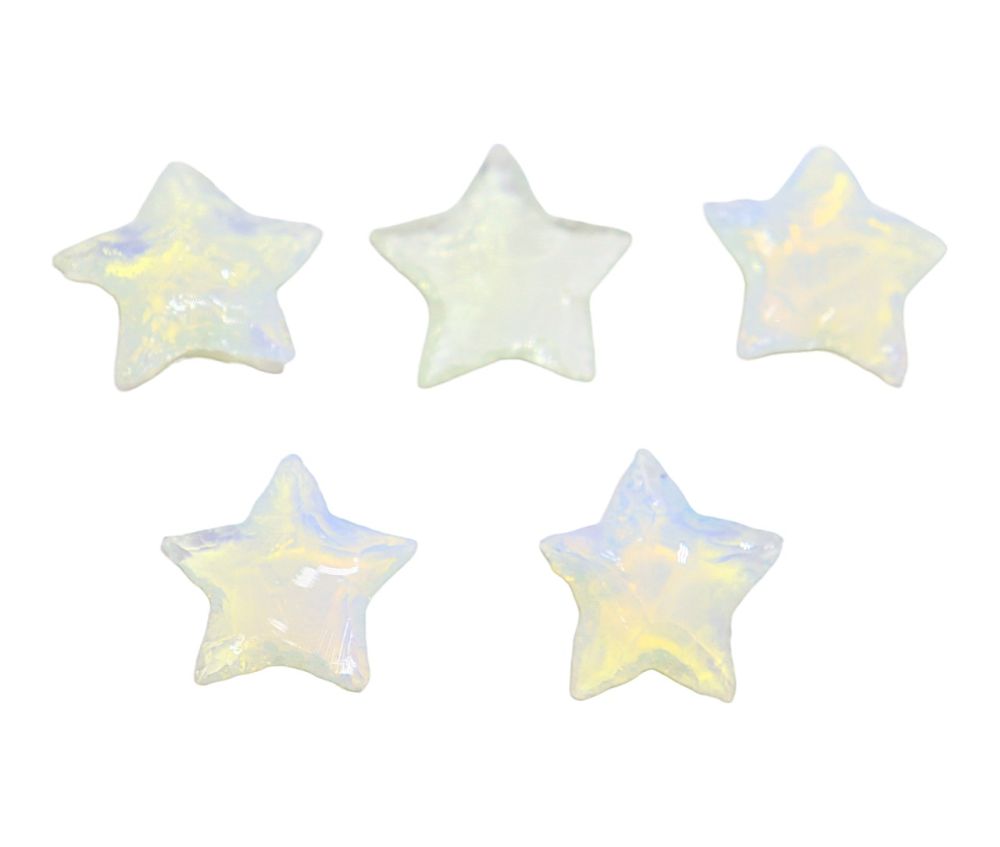We use cookies to make your experience better.
TimmersGems has a new website, existing customers also need to register again.
Star made of Opalite, made entirely by hand. Opalite from China.
Celestial bodies such as the Sun, moon and star are all the rage. People are becoming more and more spiritual and are attracted to these heavenly bodies, especially if they are made of beautiful gemstones.
Availability:
In stock
SKU
121403
A star is a spherical celestial body consisting of luminous plasma, the mass of which consists mainly (about 72%) of hydrogen and about 26% of helium. In stars, the pressure and temperature of the internal gas concentration are so high that nuclear fusion reactions occur, producing an enormous amount of energy. This energy is emitted by the star as electromagnetic radiation, including visible light, from the star's atmosphere. White dwarfs and neutron stars, the final stages of stars where nuclear fusion has stopped, are also considered stars. The structure of a star is determined by its mass and stage of evolution. The closest star to us is the Sun, followed by Proxima Centauri. Many bright stars have names that come from Arabic, because Arabs practiced astronomy seriously before this happened in the Western world. A driving force for this was the need within Islam to accurately determine the beginning and end of Ramadan, which required precise astronomical observations. In the Middle Ages, Arabs made lists and maps of the sky with the Arabic names of the visible bright stars. When interest in science revived in Europe, Europeans took over this pioneering work, including the star names.
| Dimensions | Divers |
|---|---|
| Country of Manufacture | China |












